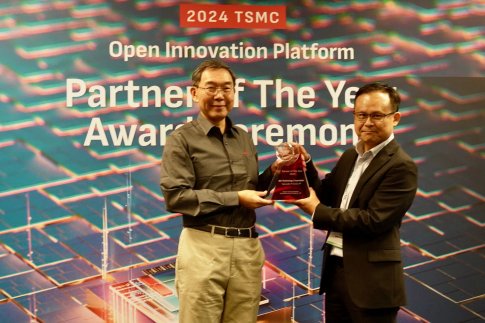M31 Launches ONFi5.1 I/O IP on TSMC 5nm Process
Redefining High-Speed Data Storage
Hsinchu, Taiwan -- September 26, 2024 – M31 Technology Corporation, a leading global provider of silicon intellectual property (IP), today announced that its cutting-edge ONFi5.1 I/O IP achieved silicon validation on the TSMC 5nm (N5) process. The company also mentioned that they are currently in the process of developing the 3nm ONFi6.0 IP.
The two announcements underscore M31’s reputation for successfully leveraging the most advanced semiconductor technologies to drive artificial intelligence and edge computing innovation in the global big data storage market. Additionally, M31 was honored with the 'TSMC OIP IP Partner Award' at the event, marking the seventh consecutive year of receiving this prestigious recognition. This achievement underscores the company's excellence in both technological innovation and product quality.
The announcements came in conjunction with M31’s participation in the TSMC 2024 North American Open Innovation Platform® (OIP) Ecosystem Forum and demonstrates the close collaboration between the two technology leaders.
One of the ONFi5.1 I/O IP’s differentiation advantages is superior data throughput. By leveraging TSMC’s 5nm technology, M31 has achieved higher speeds of 3600MT/s, reaching the peak speed of ONFI 5.1 specification. Reached to support more efficient data transfer. Increased throughput ensures faster access to data, which is critical for performance in data-intensive environments.
M31’s ONFi5.1 I/O IP also incorporates advanced features designed to optimize signal and power integrity. M31’s innovative design techniques ensure that data is transmitted reliably and with minimal delays. Focus on performance stability and error reduction enhances overall storage efficiency.
The ONFi5.1 I/O IP benefits from M31’s sophisticated power management technology, resulting in improved efficiency and extended storage device operating life. This feature also maintains performance while effectively managing power consumption.
Scott Chang, CEO of M31, stated, “It’s appropriate that we launch our latest 5nm ONFi5.1 I/O IP at TSMC’s OIP Ecosystem Forum. This collaboration highlights our dedication to integrating the latest semiconductor advancements to meet the increasing demands of the data storage market. Successful 5nm silicon validation showcases our ability to drive innovation and deliver cutting-edge solutions. We will continue to push the boundaries with next-generation technologies, like our ONFi6.0 IP and we remain committed to delivering the highest levels of data storage performance and reliability.”
“TSMC works closely with our Open Innovation Platform (OIP)® ecosystem partners like M31 to accelerate customer innovation by providing high-quality design solutions certified for use with our most advanced processes,” said Dan Kochpatcharin, Head of Ecosystem and Alliance Management Division at TSMC. “Together, TSMC and M31 are able to deliver greater value for the next-generation SoC designs, benefiting from the significant power and performance boost afforded by our latest technology innovations.”

Related Semiconductor IP
- HBM4 PHY IP
- Ultra-Low-Power LPDDR3/LPDDR2/DDR3L Combo Subsystem
- MIPI D-PHY and FPD-Link (LVDS) Combinational Transmitter for TSMC 22nm ULP
- VIP for Compute Express Link (CXL)
- HBM4 Controller IP
Related News
- M31 has successfully launched MIPI C/D PHY Combo IP on the advanced TSMC 5nm process
- M31 Launches USB4 IP for TSMC 5nm Process
- InnoGrit adopts M31's optimization solutions of PCIe 4.0/3.0 and ONFi 4.1 I/O IP cores for Artificial Intelligence Storage chips
- M31 demonstrates high-speed interface IP development achievements on TSMC's 7nm & 5nm process technologies
Latest News
- Tenstorrent unveiled its first-generation compact AI accelerator device designed in partnership with Razer™ today at CES 2026
- Marvell to Acquire XConn Technologies, Expanding Leadership in AI Data Center Connectivity
- Creonic Releases Updated SDA OCT IP Core Supporting OCT 4.0 and Enhanced Synchronization
- Synopsys Showcases Vision For AI-Driven, Software-Defined Automotive Engineering at CES 2026
- Ceva Delivers Real-Time AI Acceleration on NXP’s Processors for Software-Defined Vehicles